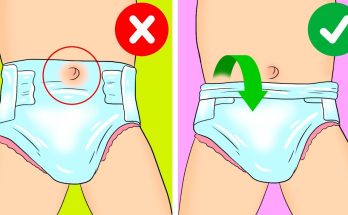Crawling is one of the most exciting milestones in your baby’s first year. It’s the beginning of their journey toward independence, exploration, and motor development. While every baby develops at their own pace, most babies begin to crawl between 6 to 10 months old. If your little one is approaching this stage, there are simple and effective ways you can support and encourage their progress.
Here are 7 expert-backed tips to help teach your baby to crawl.
1. Give Plenty of Tummy Time
Tummy time is one of the most important activities to help your baby develop the muscles needed for crawling. When babies spend time on their tummies while awake, they strengthen their neck, back, shoulders, and arms—all critical for crawling.
How to do it:
-
Start tummy time early, even from a few weeks old, and gradually increase the time as your baby grows.
-
Make it fun! Place toys within reach or lie on the floor face-to-face to keep them engaged.
-
Aim for a few sessions a day, eventually building up to a total of 30-60 minutes daily by the time they’re 3–4 months old.
2. Encourage Reaching and Pivoting
Encouraging your baby to reach for toys placed just out of reach builds strength and coordination. This helps babies learn how to shift their weight, balance on one arm, and reach forward—skills essential for crawling.
Try this:
-
Put colorful, safe toys just a few inches away from your baby during tummy time.
-
Gradually move the toy side to side to encourage pivoting and reaching.
-
Praise their efforts to keep motivation high.
3. Use a Rolled Towel or Small Pillow
If your baby is struggling to push up or get onto all fours, a little support goes a long way.
How to do it:
-
Roll up a towel or use a small pillow and place it under your baby’s chest during tummy time.
-
This gives them a slight lift, making it easier to practice pushing up with their arms.
-
Always supervise closely during this exercise.
4. Create a Safe and Spacious Play Area
Babies need space to move, roll, and explore in order to develop motor skills. A safe, open area encourages more movement and crawling attempts.
Set the stage:
-
Use a soft play mat or clean floor area free from sharp edges and choking hazards.
-
Limit time in seats like bouncers or walkers, which can delay crawling by restricting natural movement.
-
Let your baby be barefoot indoors to give their toes better grip on the floor.
5. Lead by Example
Believe it or not, your baby watches and mimics you all the time. Get down on the floor and show them what crawling looks like.
Fun ideas:
-
Crawl next to them with exaggerated motions to demonstrate.
-
Make it a game: crawl to a toy and encourage your baby to follow you.
-
Clap, smile, and cheer when they try to imitate you.
6. Use Toys to Motivate Movement
Strategically placed toys can be a great incentive to get your baby moving.
Try this technique:
-
Put a favorite toy or object slightly out of reach while they are on their tummy or all fours.
-
If they get frustrated, help them inch closer and celebrate their progress.
-
Use toys with lights, sounds, or textures to increase interest and excitement.
7. Help Them Practice the Crawling Position
As babies grow, they need to learn how to get up on their hands and knees.
How to help:
-
Gently guide their body into a crawling position by placing hands under their tummy and lifting slightly while they’re on all fours.
-
Let them rock back and forth in this position—this movement is a precursor to crawling.
-
Be patient and supportive; every baby learns at their own pace.
Final Thoughts
Crawling is a process that takes time, patience, and encouragement. Some babies may skip crawling altogether and go straight to pulling up, scooting, or walking—and that’s perfectly normal. What matters most is that they are actively developing motor skills in a safe, supportive environment.
Celebrate every small step—rolling over, scooting, or just pushing up on arms—as part of your baby’s exciting developmental journey. With consistent tummy time, fun play, and plenty of love and encouragement, your baby will be crawling before you know it.
And remember: If you’re concerned about your baby’s development or they aren’t showing signs of mobility by 10 months, consult your pediatrician for personalized guidance.



